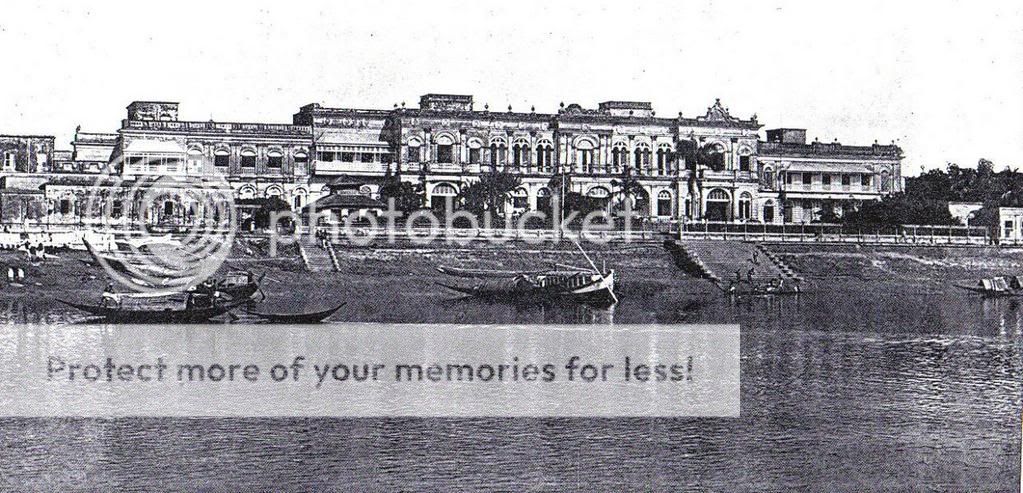CaPtAiN_pLaNeT
SENIOR MEMBER

- Joined
- May 10, 2010
- Messages
- 7,685
- Reaction score
- 0
Lost Mughal Palace
Take a look at this magazine illustration from 1874. The second picture is of Bara Katra, the third picture is of Shat Gombuj Masjid, and the fourth picture is of Lalbagh Fort. For me, however, the most interesting drawing is the first one, entitled "Ruins of the Nawab Baree." I am not certain, but I believe that this could be a picture of part of the palace of the Nawabs at Jinjiira, on the bank of the Buriganga opposite Dhaka. If so, this is the only picture of that complex I have ever seen, although D'Oyly is also supposed to sketched a picture of it (there is probably nothing left of it now; when my sources were written in the 1980s, there were just a few ruins amidst the slums). This palace was built by Nawab Ibrahim Khan II, who governed from 1689 to 1697. The palace was a grand complex surrounded by a moat and connected to Dhaka proper by a wooden bridge. In the 1980s, the remains of seven apartments with chau-chala roofs and a large hammam could still be made out. According to tradition, the wife and mother of the last independent Nawab of Bengal, Shiraj Ud Daulah, were imprisoned in this palace after he was toppled by his trecherous general, Mir Jafar, who effectively handed power over to the British in 1757. The two women were murdered by being drowned in the river.

Take a look at this magazine illustration from 1874. The second picture is of Bara Katra, the third picture is of Shat Gombuj Masjid, and the fourth picture is of Lalbagh Fort. For me, however, the most interesting drawing is the first one, entitled "Ruins of the Nawab Baree." I am not certain, but I believe that this could be a picture of part of the palace of the Nawabs at Jinjiira, on the bank of the Buriganga opposite Dhaka. If so, this is the only picture of that complex I have ever seen, although D'Oyly is also supposed to sketched a picture of it (there is probably nothing left of it now; when my sources were written in the 1980s, there were just a few ruins amidst the slums). This palace was built by Nawab Ibrahim Khan II, who governed from 1689 to 1697. The palace was a grand complex surrounded by a moat and connected to Dhaka proper by a wooden bridge. In the 1980s, the remains of seven apartments with chau-chala roofs and a large hammam could still be made out. According to tradition, the wife and mother of the last independent Nawab of Bengal, Shiraj Ud Daulah, were imprisoned in this palace after he was toppled by his trecherous general, Mir Jafar, who effectively handed power over to the British in 1757. The two women were murdered by being drowned in the river.





































